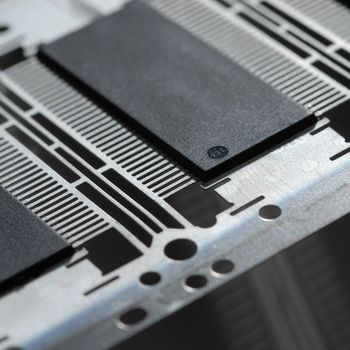
As the electronics industry makes use of ever thinner coatings, manufacturers increase their demands on measuring technologies to provide reliable parameters for product monitoring and control. The coating system Au/Pd/Ni is frequently used in the electroplating of leadframes, with CuFe2 (CDA 195) as substrate material. Typical coating thicknesses are between 3-10 nm Au and 10-100 nm Pd. For monitoring the quality of these coating systems, X-ray fluorescence instruments have established themselves as the measurement method of choice.
A series of comparative tests employing other physical measurement methods was used to determine the capabilities of X-ray fluorescence instruments within the mentioned ranges. Sample specimens were measured with the X-ray fluorescence method using the FISCHERSCOPE X-RAY XDV-SDD model, Rutherford backscatter and absolute, synchrotron radiation based X-ray.
For Au coating thicknesses of about 4, 6 and 9 nm, the results from the X-ray fluorescence instruments were all between the two other methods, with deviations in the sub-nm range, confirming not only the low scatter but also the trueness of measurements using X-ray fluorescence instruments. Traceability of the measurement results is ensured by using the FISCHER calibration standards developed specifically for this measuring application. The simple handling of X-ray fluorescence instruments also allows for easy scanning of a specimen to determine the homogeneity of the coating thickness, if required (see Fig. 2).
The combination of state-of-the-art detector technology and the powerful analysis software, WinFTM®, allows for reliable, accurate measurements of coating thicknesses even in ranges below 10 nm. For use on leadframes, the FISCHERSCOPE® X-RAY XDV®-SDD instruments are recommended for relatively normal-sized specimens; for very small structures, the XDV®-µ model, with its special X-ray optics, ensures a very small measurement spot of only 20 µm on the specimen.